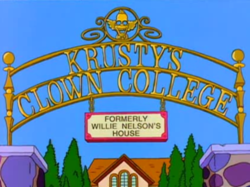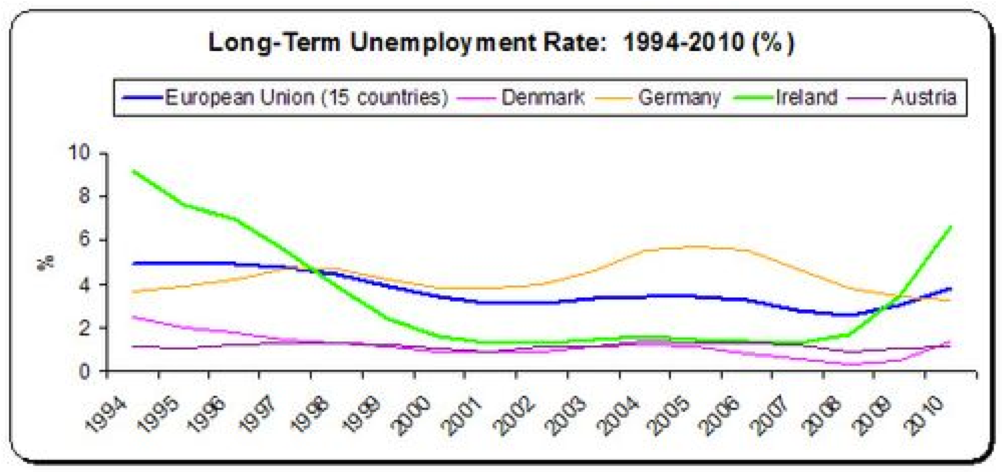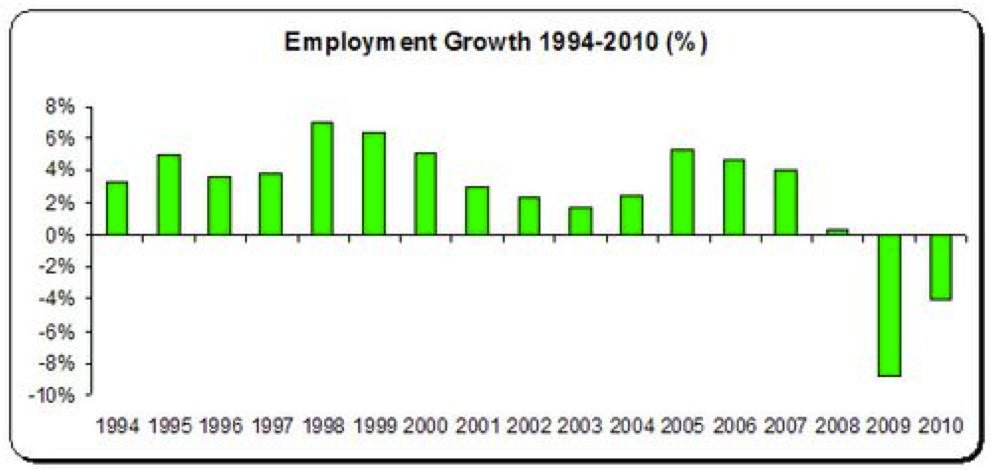Clowning around in the OECD

The OECD's proposal to cut social welfare to increase employment came straight from Krusty's Big Book of Bonkers Ideas. By Michael Taft.
Cut people’s dole to reduce unemployment - did the people who write these OECD policy prescriptions learn their craft at Krusty’s Clown College? Of course, we’ve run into some curious analysis from the OECD before – especially their argument that Ireland’s housing boom was ok, it was just a product of demographic trends. So what should we expect?
Well, we should expect them to look at past experience and see what worked. In fact, all they had to do was look at Ireland. If they did, they might find a clue as to how to solve – or at the very least, reduce to extremely low levels – long-term unemployment.

We can see that Ireland, suffering from a very high long-term unemployment rate in the mid-1990s, managed to cut this rate by nearly 9-fold, falling to one of the lowest levels for a large part of the first decade of this millennium. The EU-15 average and German rates were consistently higher than Irish rates after 1998 while we managed to fall to persistently low Denmark and Austria levels. How did we do that?
- Did we cut social welfare payments for the lazy and indolent? No, they were increased year on year with no penalties or time-limits.
- Did we export our labour in time-honoured emigration fashion? No, we had just the reverse - one of the biggest influxes of labour in the EU.
So how did we manage this considerable achievement?

Oh. Let’s see if we can find some cause and effects:
- Employment grew every year up to 2007
- Long-term unemployment fell to very low levels and remained there up to 2007
- Employment growth fell substantially in 2009 and 2010
- Long-term unemployment rose substantially in 2009 and 2010
Now call me simplistic but I’m starting to see a pattern here:
When employment grows, unemployment falls
When employment falls, unemployment grows
Readers will rightly claim that many of those jobs created in the early part of the century were asset-bubble jobs. But the point here is that people will work when employment is available. They don’t need OECD incentives; they don’t need threats to their social welfare income. They may need re-skilling, they may need job-search assistance. But the bottom line is that if jobs are provided, the Live Register will shrink.
In 2010 there were 2,153,000 in the labour force. There were 1,859,000 jobs. When I take my calculator out, the difference is 294,000. And guess what? In 2010, there were 294,000 unemployed. This is the equation that the OECD either ignores, finds inconvenient, or just plain doesn’t get.
LF – J = U
Where LF = Labour Force, J = Jobs, and U = Unemployment.
Instead, the OECD and other Clown College alumni believe that if the long-term unemployed send out more CVs, knock on more doors, shine up their ol’ brown shoes and get on their bikes – jobs will suddenly appear. They believe that:
U + EW = -U(ew)
Where U = Unemployment, EW = Economic water-boarding practiced on long-term unemployed and –U(ew) = the fall in unemployment in proportion to the EW applied.
There is something more insidious here. Donagh Brennan rightly points out that threatening the long-term unemployed with social welfare penalties will drive people to compete in the labour market which will drive down wages and boost profits. And it is an article of faith, with a smidgen of ideological bias, that profits derived from wage suppression will somehow create employment.
The next proposal from the OECD will be to televise the long-term unemployed in Gladiator-type pay-for-view contests to see who can drive down wages the most. The winner gets a poverty-line job. The owner gets the profits. We all get entertained by other people's misery. Win-win-win.
And if you think this is an outrageous proposition, then you have not been exposed to the curriculum at Krusty’s Clown College.
{jathumbnailoff}
